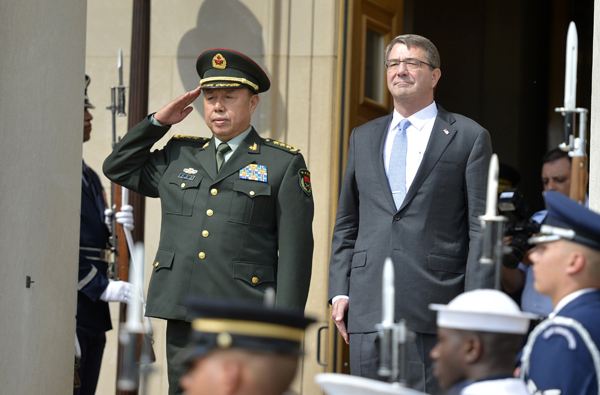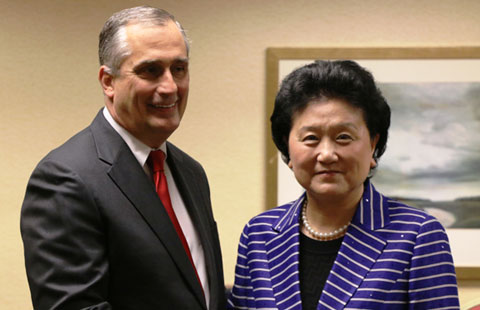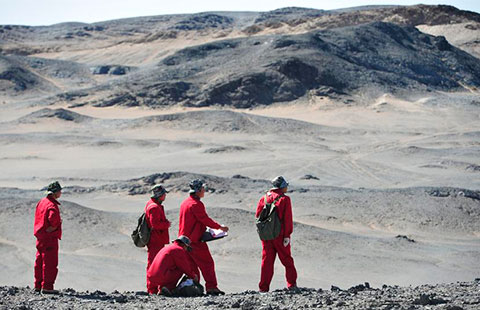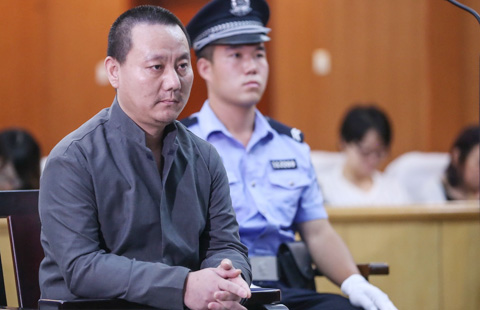Military visit underlines power of talk
Updated: 2015-06-19 22:36
By
Shao Yongling
(China Daily USA)
|
||||||||
An increase in transparency is vital to bolstering trust and reducing misunderstandings
Just as economic and trade ties form the anchor of bilateral relations between China and the United States, military ties are a weather vane, prone to changes of direction as conditions change.
However, since 2011, despite occasional twists and turns, military ties between China and the US have become more stable, with the help of high-level reciprocal visits, joint military drills and routine consultations.
The visit to the US by a delegation led by Chinese Central Military Commission Vice-Chairman Fan Changlong that began last week illustrates the maturing China-US military relationship.
It is also an important step in building a new kind of military relationship that conforms to the “new model of major-country relations” highlighted in the first white paper on military strategy that Beijing issued recently.
Fan’s visit has two focuses. First, the US has arranged for him to visit three military bases (army, navy and marines), the aircraft carrier USS Ronald Reagan and a Boeing factory, the most comprehensive program for a Chinese high-level military visit to the US in recent years.
It demonstrates the growing trust in China-US military relations, a sphere in which there has long been a distinct lack of trust, which has added to a general lack of trust on both sides.
It is thus vital that there be more transparency in military matters between the two countries, which can only increase this goodwill and trust, and reduce the chances of misunderstanding and misjudgments. It would also help bring to fruition this new model of major-country relations, one free of conflict.
Second, as Chinese President Xi Jinping prepares to visit the US in three months, China and the US are dealing with issues squarely, in particular China’s construction work on reefs and islets in the South China Sea.
Last month, a US navy anti-submarine and surveillance aircraft flew over waters off China’s Nansha Islands, and US Defense Secretary Ashton Carter said his country was “deeply concerned” about China’s land reclamation, and urged it to stop construction.
In recent months, the US government has been leveling spurious allegations against China on cybersecurity issues. At the beginning of last month US media reported that personal information of 4 million US federal workers was hacked, and that it was suspected that the attack originated in China.
It seems that China and the US will have a hard time to compromise in such disputes, and debates and quarrels are almost inevitable.
The existence of such different points of view makes communicating all the more necessary. Avoiding discussing issues can only create suspicion. Open and straightforward dialogue, on the other hand, can prevent crises and help manage risks that are prone to flare up into brush fires, with the destructive power to bilateral ties that this can bring.
The author is a military specialist and senior colonel from the PLA’s Second Artillery Command College.
Most Viewed
Editor's Picks

|

|

|

|

|

|
Today's Top News
Obama suggests more gun control after shooting
Talks seen as prelude to visit by President Xi to US in September
The most costly cities for expats
House passes fast-track trade bill
Gunman kills nine people in South Carolina church shooting
US House moves to revive Obama's Pacific trade pact
Hong Kong lawmakers reject election reform proposal
Lies and false hopes entrap Xinjiangers
US Weekly

|

|















